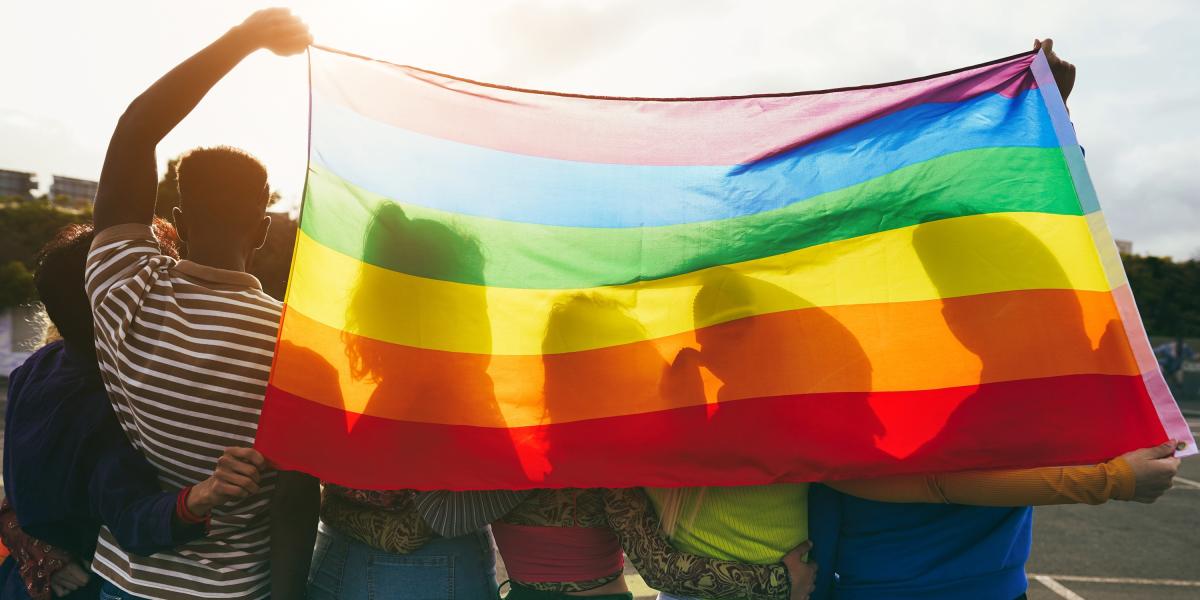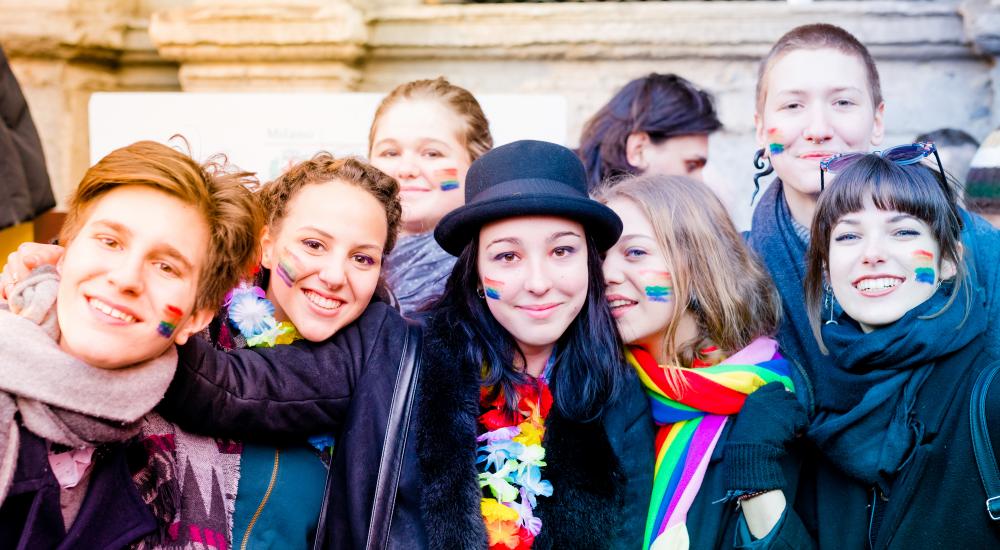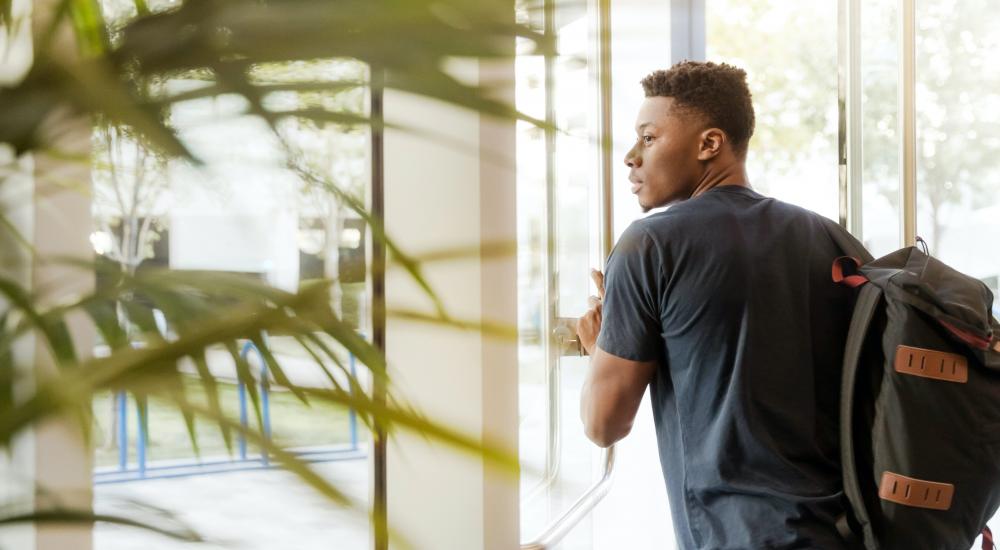Out and About

With 20.8 percent of Gen Z adults in the United States identifying as LGBTQ, per a 2022 Gallup poll, it’s no surprise that the student population at U.S. colleges and universities reflects that diversity. A 2020 survey of 180,000 undergraduate and graduate students by the Association of American Universities found nearly 17 percent identified as gay, lesbian, bisexual, asexual, queer, or questioning, while 1.7 percent identified as transgender, nonbinary, or questioning.
Given these data, it stands to reason that international offices are serving more LGBTQ students now than ever before. Not only are more LGBTQ students from the United States studying abroad but many U.S. campuses are seeing more international students who identify as LGBTQ. International educators must consider how to best meet these students’ needs.
“They need to feel they belong; they need to feel safe and be safe."—Mary Schlarb
In some ways, LGBTQ international students and U.S. students studying abroad face many of the same issues. “They need to feel they belong; they need to feel safe and be safe,” says Mary Schlarb, director of international programs at the State University of New York-Cortland (SUNY-Cortland). “It’s also a time when a lot of them are going through periods where they are exploring their own identity. That’s what college is about, and it’s also what going to a new place is about.”
Yet each group has its own issues. Understanding the challenges each faces and knowing how best to advise and provide support can enrich the academic and personal experiences for both groups.
Considerations for LGBTQ International Students
When international students come to the United States, they get a crash course in U.S. culture. But for LGBTQ international students, coming to the United States can be a different kind of revelation—and a challenge—particularly if they are coming from countries where being LGBTQ is disparaged or criminalized. There are multiple aspects of LGBTQ international students’ experience that their advisers should take into account as they determine how best to support students. Among them:
Identity
International student advisers should first recognize and respect students’ identities, then determine how to provide appropriate ways to support their needs.
“We have a tendency to lump all international students into the same group,” says Tony Lee, assistant professor of higher education and learning technology at Texas A&M University-Commerce. “As advisers, we need to be cautious about putting them in the same box as other international students. Their needs may be different.”
For example, LGBTQ international students may be much more cautious about social media, out of concern of being inadvertently “outed.” “When people take a picture of them and post it without their consent, it can end up causing a lot of issues,” says Lee.
“We have a tendency to lump all international students into the same group."—Tony Lee
Indeed, one of the main obstacles LGBTQ international students face is that their identities are often viewed separately and not together—for instance, Muslim or gay, not Muslim and gay; nonbinary or South Asian, not nonbinary and South Asian. International educators who have researched the needs of LGBTQ international students stress the importance of understanding how their identities come together.
“One of the major things we talk about is queer erasure and intersectionality,” says Marissa Ruhno, a graduate student at the Middlebury Institute of International Studies-Monterey (MIIS) and a coauthor of the Queer International Student Guidebook. “Queer erasure is how a lot of times queer international students are viewed by their international student identity rather than their queer identity, feeling less supported for their queer identity. They need support based on both identities.”
Even when advisers try to support an international student’s LGBTQ identity, they may be starting from the wrong place. It’s important for advisers to understand the culture from which the students are coming, not just the one into which they are arriving.
“A lot of people in the United States try to provide resources and support in a way they support students in [this country],” says Kei Mamiya, an independent contractor assisting Mississippi State University in international student recruitment and onboarding. “Having a conversation and trying to understand where the student is coming from gives the adviser more direction in terms of what kind of resources they should provide.”
Mamiya notes that some international students are so used to hiding their LGBTQ identities that it may take special effort and sensitivity to draw them out. “Probably the most challenging part of supporting LGBTQ students is that some of them might not want to share,” he says. “Back home, being LGBTQ may not be accepted. It makes them still want to hide themselves when they come to the United States.”
Culture
At the same time, international students need to adjust to the LGBTQ culture in the United States as much as they do to U.S culture more generally. “There’s adjusting to the U.S. culture and there’s adjusting to the U.S. queer culture,” says Ruhno. “Here, it’s accepted as normal to be out. Some people come from cultures where they have only one LGBTQ group in the country, where here there are 100 in the state. It’s hard to adjust to such a large community.”
Advisers should also be aware that LGBTQ international students may have different cultural sensitivities about their identities than U.S. students. “Some international students could be coming from a culture that is more reserved or traditional,” says Lee. “They may not be accepted in their community or country or culture.” Lee says that for that reason, advisers may want to consider talking to LGBTQ students in a private setting, as opposed to an open office, where they may be less comfortable.
“There’s adjusting to the U.S. culture and there’s adjusting to the U.S. queer culture."—Marissa Ruhno
Mamiya also notes that U.S. understanding of gender issues doesn’t always align with that of other cultures. “In South Asian culture before colonialism, the [genderfluid] community was more accepted,” he says, pointing to gender neutral deities. “Gender neutral and nonbinary are more recent ideas in Western culture, but in a lot of cultures that’s been accepted for a long time.”
Resources
Developing a broad network of LGBTQ allies across campus as a resource provides additional support that students can turn to when they are facing challenges, says Lee, given that existing student resources might not be a good fit for some international students.
Cultural differences mean that what might seem like an obvious resource—campus LGBTQ student groups—may not be the right resource for some international students. “It’s positive to see so many support groups on campus, but it’s true that international students are not often participating in those groups,” says Anne Campbell, chair and associate professor of the International Education Management Program at MIIS and a coauthor of the Queer International Student Guidebook. “Some don’t feel comfortable being associated with the group. Some attend the meetings but don’t feel they fit in. They’re also dealing with different issues.”
While counseling may seem like a good solution to help students through challenging times, some LGBTQ international students may feel counseling has a stigma attached to it. Campbell said that it requires extra effort to find someone who can understand the cultural issues at play and help students overcome them to get the help they need.
“It’s positive to see so many support groups on campus, but it’s true that international students are not often participating in those groups."—Anne Campbell
“I have dealt with students where the struggle is mental,” Lee says. “The family is not accepting. The student wants to be out but is afraid the family will cut them off. Sometimes they are struggling mentally without telling anyone. Building that relationship with the students and making sure we listen and provide support whenever he or she needs it is crucial.”
Considerations for LGBTQ Students Studying Abroad
For LGBTQ students from the United States who are interested in studying abroad, the issues are often different. Yet, for advisers, the starting point is the same as for international students: listening to the students and understanding their needs. Education abroad offices can signal from the outset their awareness that LGBTQ students will be among those studying abroad, opening the door to further conversation. From that starting point, there are several ways advisers can support students:
Rethinking predeparture orientation
At SUNY-Cortland, predeparture orientations include the spectrum of LGBTQ identities in their discussions. “When we talk about friendship and dating, we use diverse examples to show we are aware that students will be of different identities,” says Schlarb.
Patrick Bingham, a research assistant professor at Wake Forest University, says that these orientations should go further and include resources specifically for LGBTQ students.
“They don’t necessarily want to attend carved-out things,” says Bingham, who has researched the experiences of LGBTQ students who studied abroad. “They just want to be included. Embedding these resources in the orientation would go a long way to help them feel included as part of the larger group.”
Bingham says that based on his own research, institutions often have a ways to go to offer more inclusive programming and support for LGBTQ students.
"Embedding these resources in the orientation would go a long way to help them feel included as part of the larger group.”—Patrick Bingham
“I think [the study abroad office’s] advising practices are to provide that info when the student discloses their identity,” he says. “That being said, not including content in any orientation program puts a lot of onus on the student and doesn’t allow for those conversations to happen for everyone.”
Explaining risks
Talking to students about their study abroad options should include conversations about the nuances—and risks—of countries where they may want to go. “Have those conversations with students before they go so everyone is on the same page,” Bingham advises. He also notes that, just as in many parts of the United States, just because a country is considered inclusive of LGBTQ communities doesn’t mean that a student won’t experience homophobia or transphobia.
Distance presents one of the most significant challenges for advisers working with students studying abroad. On our campus, “we know the community we live in,” says Schlarb. “We know the colleagues who can be resource people. When we are sending people abroad, it’s one step removed. We may not have direct experience with that country. If students experience a problem, how do we support them from here?”
Finding good partners
Education abroad offices evaluate potential partners with many criteria, and support for LGBTQ students should be a component of the vetting process.
Schlarb recommends asking about LGBTQ resources at partner institutions to help support students locally. “If we’re sending them to a university partner, we can talk to the university partner about what is available on their campus,” she notes.
That way, says Bingham, advisers “can look for programs and courses that might be a fit to accommodate queer students. Do they have a gender studies program or a wide array of courses to express identity abroad in a new cultural environment?”
If we’re sending them to a university partner, we can talk to the university partner about what is available on their campus."—Mary Schlarb
Schlarb also notes paying attention to housing details, citing the example of one student whose study abroad experience was marred by a guest host who made disparaging comments about LGBTQ people.
Keeping in touch
Lee also suggests that advisers check in with their study abroad students during the transition period to ensure they feel safe and are adjusting to their new environment. It’s helpful both for students and advisers to have a debriefing conversation after the student returns, as well. “It helps students understand their personal experience,” says Lee. “As study abroad advisers, it helps so that we have information on file that we can use for future reference.”
A Tailored Approach
For both LGBTQ international students and U.S. students studying abroad, there is a simple common thread to good advising: “You need a tailored approach,” says Bingham. “Listen to their needs.”
When students receive advising and support, it can contribute to one of the oft-cited outcomes of international education experiences: personal transformation.
“It’s really nice to hear the confidence of the people we’ve spoken to,” says Ruhno. “The ability to discover who they are as queer people is very powerful.” •
NAFSA Resources
Additional Resources
About International Educator
International Educator is NAFSA’s flagship publication and has been published continually since 1990. As a record of the association and the field of international education, IE includes articles on a variety of topics, trends, and issues facing NAFSA members and their work.
From in-depth features to interviews with thought leaders and columns tailored to NAFSA’s knowledge communities, IE provides must-read context and analysis to those working around the globe to advance international education and exchange.
About NAFSA
NAFSA: Association of International Educators is the world's largest nonprofit association dedicated to international education and exchange. NAFSA serves the needs of more than 10,000 members and international educators worldwide at more than 3,500 institutions, in over 150 countries.
NAFSA membership provides you with unmatched access to best-in-class programs, critical updates, and resources to professionalize your practice. Members gain unrivaled opportunities to partner with experienced international education leaders.













